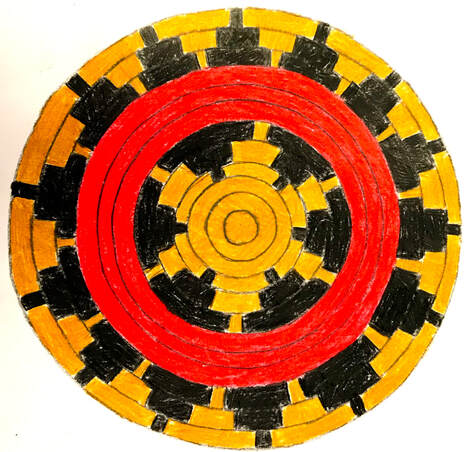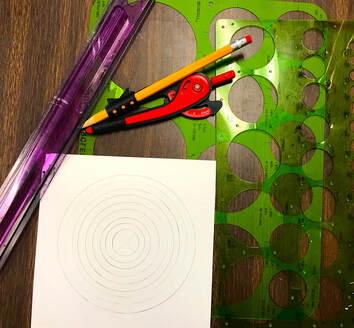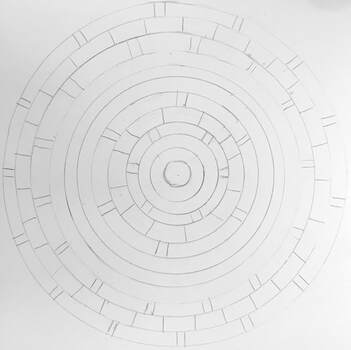Raffia Coil Basket
|
In Native American cultures, baskets took the place of every modern convenience we take for granted and also served as a representation of tribes and stories.Baskets showcased individual character and the vitality of the Native Americans who made them.
Each tribe used different materials native to the area to weave their baskets. Northeastern Indian baskets are made from pounded ash splints or braided sweetgrass. Southeastern Indians used bundled pine needles or rivercane wicker. Southwestern Indians made baskets from tightly coiled sumac or willow. Northwest Coast Indians wove their baskets with cedar bark, swamp grass, and spruce root. Northern Indians crafted birchbark and whale baleen baskets. https://blog.kachinahouse.com/basket-weavings-importance-in-native-american-culture/ The Navajo used baskets for a wide variety of everyday functions such as storing food, as well as ceremonial purposes, the most well-known being wedding ceremonies. Traditional Navajo baskets feature black and red bands or triangular patterns and a braided rim. Usually, the artist would leave an opening, or spirit line, in the banded design. To make a basket, the artist creates long laces of sumac, willow or yucca by hand then weaves the basket in concentric circles from the center, alternating the laces to create patterns in the design. In recent decades, a group of Navajo weavers led by Mary Black and her family have revitalized Navajo basketry by embracing contemporary designs and incorporating Navajo symbols and vibrant colors not traditionally used in baskets.
https://bischoffsgallery.com/online-store/baskets/navajo-baskets/a1-apache-basket-information-2619-2620-2621.htm |
|
Generating Ideas
Spend some time looking at some traditional Native baskets. Baskets were made of all sorts of natural material like bark, reeds, dry grasses, and pine cones. Many patterns and colors have symbolic meanings. Take some time to look at the symbolism found in their artwork. These ideas can be transferred to your own project or you can create your own symbolic meaning. Save a few basket images to refer to when planning your design. Doodle an over all plan you would like to use when deciding color placement and design work in your basket. Keep in mind that symbolism varies from tribe to tribe.
Spend some time looking at some traditional Native baskets. Baskets were made of all sorts of natural material like bark, reeds, dry grasses, and pine cones. Many patterns and colors have symbolic meanings. Take some time to look at the symbolism found in their artwork. These ideas can be transferred to your own project or you can create your own symbolic meaning. Save a few basket images to refer to when planning your design. Doodle an over all plan you would like to use when deciding color placement and design work in your basket. Keep in mind that symbolism varies from tribe to tribe.
Test Pattern
 https://www.adobegallery.com/art/traditional-navajo-dine-ceremonial-wedding-basket-by-fannie-slim
https://www.adobegallery.com/art/traditional-navajo-dine-ceremonial-wedding-basket-by-fannie-slim
Traditional Navajo - Diné Ceremonial Wedding Basket
The designs in these baskets have significance and depending on the interpretation can symbolize the creation myth, life’s journeys or be a map of the Navajo cosmos. The simplest interpretation is that the white center is the emergence area, or area of birth. The black coils represent clouds or four sacred mountains. The red band is the sun’s rays which bring life. There is always a line from the center of the basket to the outer rim, a path from the center for the Spirit to come and go. The pathway meets at the outer edge where the weaver has stopped coiling.
When there is a piece of fabric stuffed in the hole in the beginning of a Navajo basket, that is an indication that the basket was used in a ceremony where sacred corn meal or soap suds was in the basket. The fabric presents the contents from falling through the hole. https://www.adobegallery.com/art/traditional-navajo-dine-ceremonial-wedding-basket-by-fannie-slim
The designs in these baskets have significance and depending on the interpretation can symbolize the creation myth, life’s journeys or be a map of the Navajo cosmos. The simplest interpretation is that the white center is the emergence area, or area of birth. The black coils represent clouds or four sacred mountains. The red band is the sun’s rays which bring life. There is always a line from the center of the basket to the outer rim, a path from the center for the Spirit to come and go. The pathway meets at the outer edge where the weaver has stopped coiling.
When there is a piece of fabric stuffed in the hole in the beginning of a Navajo basket, that is an indication that the basket was used in a ceremony where sacred corn meal or soap suds was in the basket. The fabric presents the contents from falling through the hole. https://www.adobegallery.com/art/traditional-navajo-dine-ceremonial-wedding-basket-by-fannie-slim
|
Test Pattern Directions
You will be drawing a traditional Native American Design for your test pattern. These designs are often very graphic, symmetrical, and geometric. As you work on your drawing, think about how this would look using raffia pieces. For example, the single black square at the end of the stacked pattern would be one or two wraps of the raffia. Don't worry about precise measurements when creating your design. Estimate where things will go. Step 1 - Draw 12 concentric circles using a template and compass. Step 2 - Draw out the design.
Step 3 - Trace over your pencil lines with a black colored pencil Step 4 - Color in the pattern using red, black and tan colored pencils |
Raffia Coil Basket Directions
Materials
White Cord
Raffia
Metal Needle
Cup of Water
Beads or other decretive objects (optional)
Materials
White Cord
Raffia
Metal Needle
Cup of Water
Beads or other decretive objects (optional)
|
General Directions:
TIP: Soak the raffia in water for a few minutes before threading it. It makes the raffia less likely to break. After being coiled, it will shrink a little keeping your weaves tight.
|





